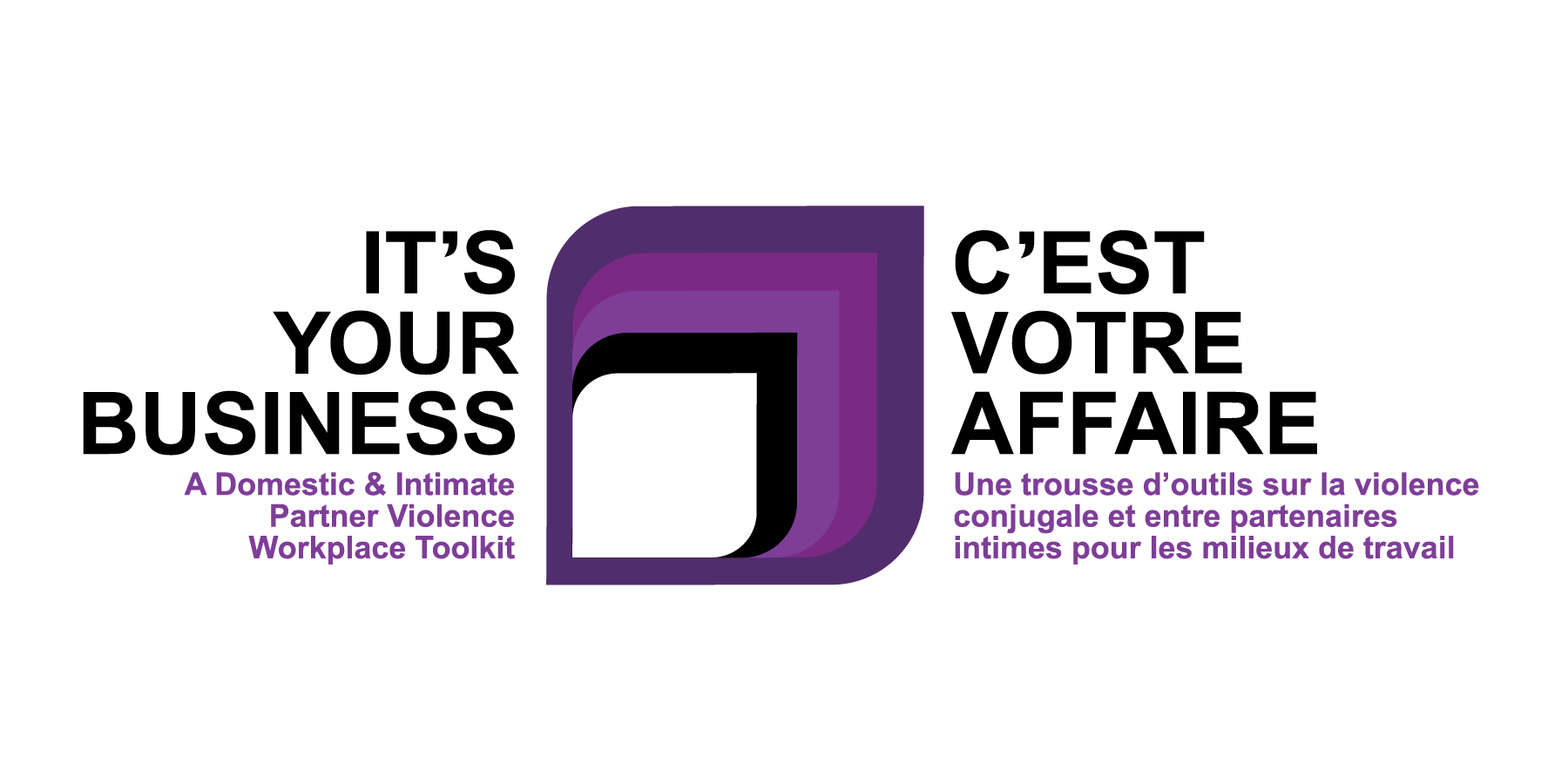How to create a supportive workplace
Employees are the most valuable asset in any workplace. There are a variety of strategies that employers interested in building a workplace where employees feel safe, supported and valued can employ to accomplish that goal. In a healthy workplace where difficult topics can be discussed, employees are more likely to notice when a co-worker is in distress. As well, persons experiencing domestic/intimate partner violence (DIPV) are more likely to disclose their situation when they feel safe and supported at work.
DIPV is a pervasive issue that makes a person feel a lack of autonomy and a lack of self-esteem. Often, people subjected to DIPV may fear that by disclosing the abuse to someone at work, they will put their job in jeopardy. They do not want to be seen as incapable of doing their job.
Workplace policies, practices and programs that promote awareness of DIPV, respectful behaviour in the workplace and a safe space for employees can work together to create a supportive work environment for employees who are subjected to DIPV. They also enable employers and other employees to develop an increased understanding of co-workers who are in this situation and to provide appropriate support.
Actions for a supportive workplace:
- Review violence and respectful workplace policies with staff
- Promote awareness and provide promotional materials on domestic and intimate partner violence
- Provide information sessions
- Model respectful behaviour in the workplace
- Ensure a safe workplace
The New Brunswick Occupational Health and Safety regulation pertaining to workplace violence and harassment requires employers to take precautions to ensure every worker has a healthy and safe workplace that is free of violence and harassment. Workplace violence is defined to include sexual violence, intimate partner violence and domestic violence that may affect the workplace. For more information, see:
Examples of supportive policies, practices and programs for the workplace:
Violence Prevention and Respectful Workplace Policies These policies demonstrate to employees that they work in an environment where neither violence nor harassment is an acceptable behaviour. Policies define what harassment is and is not, define the types of harassment, including workplace bullying, and provide processes for reporting and responding to complaints.
Risk Assessments and development of codes of practice are now required under the Occupational Health and Safety Legislation. The violence risk assessment should also evaluate the risk of DIPV that may impact the workplace. Workplaces need to develop tools to assess risk and train employees on how to use these tools. Resources are available on the WorkSafeNB website.
Workplace Safety Plans set out specific actions that will be taken to keep workers safe from threats associated with DIPV. Staff within an organization should be knowledgeable in the development of these plans. The Workplace Safety Plan (or other related policy) should allow for the creation of an individualized safety plan for an employee experiencing DIPV. A sample Individualized Workplace Safety Plan template can be found in the resources section.
Employee & Family Assistance Programs (EFAP, also known as Employee Assistance Program or EAP)provide aconfidential service to employees and employers 24 hours a day, 365 days a year. EFAPs are an excellent way to support employees and co-workers who are impacted by DIPV in the workplace. In addition to counselling, EFAPs can offer support with response to legal and financial questions, and provide community resources and tools.
Safe-Walk Programs canensure a sense of security for employees. If safe and appropriate, workplaces can arrange for someone such as a member of security personnel to escort concernedemployees to their vehicles after work.
Supportive Benefit and Leave Policies can go a long way toward assisting a victim/survivor of DIPV. Supportive benefit and leave policies provide job protection for employees and demonstrate a supportive environment when employees must take time off work to address a situation of DIPV. In New Brunswick, the Employment Standards Act requires that employers provide a Leave of Absence for individuals subject to Domestic, Intimate Partner or Sexual Violence. For more information on these provisions and eligibility, see https://www2.gnb.ca/content/dam/gnb/Departments/petl-epft/PDF/es/FactSheets/OtherLeaves.pdf.
Child Care Policies or Programs can reduce stress on employees and give them a sense of security. Having a safe place for their children to go is a significant source of support for an employee who is experiencing DIPV. Knowing their children are safe will allow the employee to focus on the situation and seek appropriate assistance.
Privacy is always paramount in a supportive workplace and it should be clearly addressed in policy and program development. Confidentiality statements should outline the protected rights of the parties involved in a DIPV situation in the workplace.
For more information, see:
Please note: the word “victim” is used throughout our toolkit where the term “survivor” could also be used to describe people subjected to domestic or intimate partner violence. While some identify as surviving the experience and others, as being victimized, we respectfully acknowledge that some people subjected to abuse do not relate to either term.
